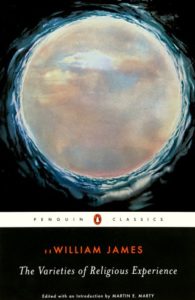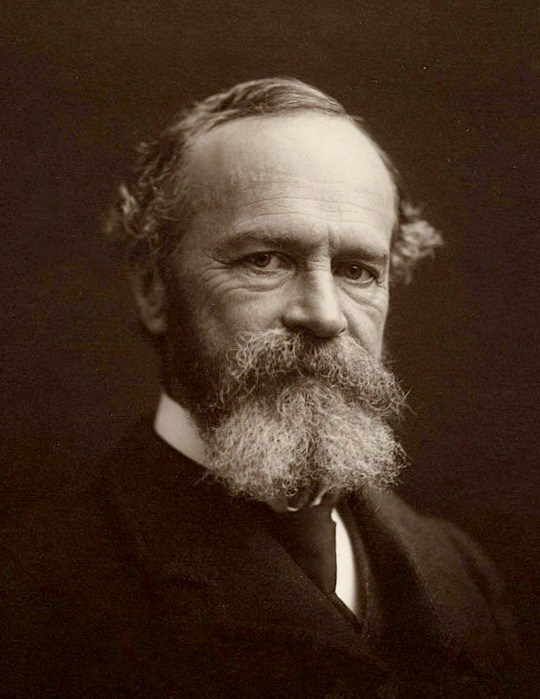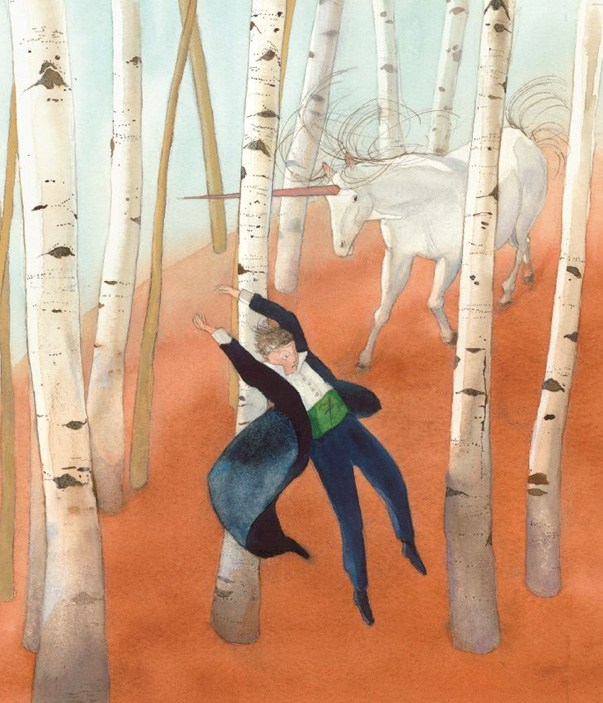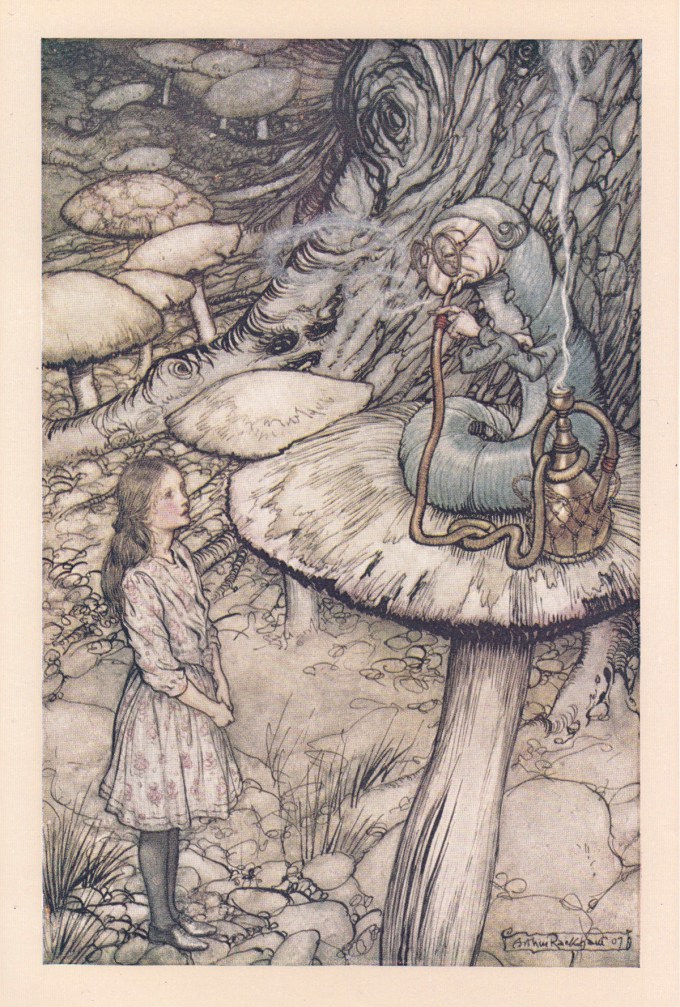William James on Consciousness and the Four Features of Transcendent Experiences
INSPIRATIONAL, 20 Jun 2018
Maria Popova | Brain Pickings – TRANSCEND Media Service
“Our normal waking consciousness… is but one special type of consciousness, whilst all about it, parted from it by the filmiest of screens, there lie potential forms of consciousness entirely different… No account of the universe in its totality can be final which leaves these other forms of consciousness quite disregarded.”
 “Queer, in fact maddening, to think that ‘beauty’ in nature is for us alone: for the human eye alone. Without our consciousness it doesn’t exist,” Joyce Carol Oates wrote in her journal. “All of nature, all of the given ‘world,’ is in fact a work of art. Only the human consciousness can register it.” Four decades earlier, Virginia Woolf had recorded the selfsame sentiment in what remains the most stunning passage from her own journal; four decades later, neuroscientist Christof Koch would echo the sentiment in the unsentimental chamber of science: “Without consciousness there is nothing… Consciousness is the central fact of your life.”
“Queer, in fact maddening, to think that ‘beauty’ in nature is for us alone: for the human eye alone. Without our consciousness it doesn’t exist,” Joyce Carol Oates wrote in her journal. “All of nature, all of the given ‘world,’ is in fact a work of art. Only the human consciousness can register it.” Four decades earlier, Virginia Woolf had recorded the selfsame sentiment in what remains the most stunning passage from her own journal; four decades later, neuroscientist Christof Koch would echo the sentiment in the unsentimental chamber of science: “Without consciousness there is nothing… Consciousness is the central fact of your life.”
Long before Koch and Oates and Woolf, the pioneering psychologist and philosopher William James (January 11, 1842–August 26, 1910) examined the mystery and complexity of consciousness in The Varieties of Religious Experience: A Study in Human Nature (public library | free ebook) — the 1902 masterwork based on his Gifford Lectures, in which James explored science, spirituality, and the human search for meaning.
James considers the central function of human consciousness — to make sense of reality through abstract concepts:
The whole universe of concrete objects, as we know them, swims… in a wider and higher universe of abstract ideas, that lend it its significance. As time, space, and the ether soak through all things so (we feel) do abstract and essential goodness, beauty, strength, significance, justice, soak through all things good, strong, significant, and just.
Such ideas, and others equally abstract, form the background for all our facts, the fountain-head of all the possibilities we conceive of. They give its “nature,” as we call it, to every special thing. Everything we know is “what” it is by sharing in the nature of one of these abstractions. We can never look directly at them, for they are bodiless and featureless and footless, but we grasp all other things by their means, and in handling the real world we should be stricken with helplessness in just so far forth as we might lose these mental objects, these adjectives and adverbs and predicates and heads of classification and conception.
Three decades after Nietzsche lamented how our abstractions blind us to the actuality of life, James adds:
This absolute determinability of our mind by abstractions is one of the cardinal facts in our human constitution. Polarizing and magnetizing us as they do, we turn towards them and from them, we seek them, hold them, hate them, bless them, just as if they were so many concrete beings. And beings they are, beings as real in the realm which they inhabit as the changing things of sense are in the realm of space.
And yet our consciousness, James argues, is capable of states that radically disrupt its own neat model-universe of abstractions. He considers how these transcendent states discompose our constructed, concept-constricted experience of reality:
Our normal waking consciousness, rational consciousness as we call it, is but one special type of consciousness, whilst all about it, parted from it by the filmiest of screens, there lie potential forms of consciousness entirely different. We may go through life without suspecting their existence; but apply the requisite stimulus, and at a touch they are there in all their completeness, definite types of mentality which probably somewhere have their field of application and adaptation. No account of the universe in its totality can be final which leaves these other forms of consciousness quite disregarded. How to regard them is the question — for they are so discontinuous with ordinary consciousness. Yet they may determine attitudes though they cannot furnish formulas, and open a region though they fail to give a map. At any rate, they forbid a premature closing of our accounts with reality.
A quarter century before quantum mechanics founding father Niels Bohr formulated the principle of complementarity and its corollary that, in the words of the Nobel-winning physicist Frank Wilczek, “you can recognize a deep truth by the feature that its opposite is also a deep truth,” James offers the defining feature of these transcendent forms of consciousness:
It is as if the opposites of the world, whose contradictoriness and conflict make all our difficulties and troubles, were melted into unity. Not only do they, as contrasted species, belong to one and the same genus, but one of the species, the nobler and better one, is itself the genus, and so soaks up and absorbs its opposite into itself.
James had arrived at this conclusion not merely as a philosopher, but as an empiricist, using his own body-mind as a laboratory for experiments with nitrous oxide — a favorite of the visionary chemist and inventor Humphry Davy’s, who christened the substance “laughing gas” for its pleasurable euphoric effects. The mild hallucinogenic properties of nitrous oxide gave James a glimpse of a whole other side of his own consciousness, which he used as a springboard into understanding so-called mystical, or transcendent, experiences — “a group of states of consciousness peculiar enough to deserve a special name and to call for careful study.”
Governed by the conviction that “phenomena are best understood when placed within their series,” he morphologizes the four defining features of these experiences — the first two necessary and sufficient to qualify the transcendent state of consciousness as such, the remaining two subtler and not required, but often accompanying the experience:
- Ineffability. – The handiest of the marks by which I classify a state of mind as mystical is negative. The subject of it immediately says that it defies expression, that no adequate report of its contents can be given in words. It follows from this that its quality must be directly experienced; it cannot be imparted or transferred to others. In this peculiarity mystical states are more like states of feeling than like states of intellect. No one can make clear to another who has never had a certain feeling, in what the quality or worth of it consists. One must have musical ears to know the value of a symphony; one must have been in love one’s self to understand a lover’s state of mind. Lacking the heart or ear, we cannot interpret the musician or the lover justly, and are even likely to consider him weak-minded or absurd. The mystic finds that most of us accord to his experiences an equally incompetent treatment.
- Noetic quality. — Although so similar to states of feeling, mystical states seem to those who experience them to be also states of knowledge. They are states of insight into depths of truth unplumbed by the discursive intellect. They are illuminations, revelations, full of significance and importance, all inarticulate though they remain; and as a rule they carry with them a curious sense of authority for after-time.
- Transiency. — Mystical states cannot be sustained for long. Except in rare instances, half an hour, or at most an hour or two, seems to be the limit beyond which they fade into the light of common day. Often, when faded, their quality can but imperfectly be reproduced in memory; but when they recur it is recognized; and from one recurrence to another it is susceptible of continuous development in what is felt as inner richness and importance.
- Passivity. — Although the oncoming of mystical states may be facilitated by preliminary voluntary operations, as by fixing the attention, or going through certain bodily performances, or in other ways which manuals of mysticism prescribe; yet when the characteristic sort of consciousness once has set in, the mystic feels as if his own will were in abeyance, and indeed sometimes as if he were grasped and held by a superior power. This latter peculiarity connects mystical states with certain definite phenomena of secondary or alternative personality, such as prophetic speech, automatic writing, or the mediumistic trance. When these latter conditions are well pronounced, however, there may be no recollection whatever of the phenomenon, and it may have no significance for the subject’s usual inner life, to which, as it were, it makes a mere interruption. Mystical states, strictly so-called, are never merely interruptive. Some memory of their content always remains, and a profound sense of their importance. They modify the inner life of the subject between the times of their recurrence. Sharp divisions in this region are, however, difficult to make, and we find all sorts of gradations and mixtures.
More than a century after its groundbreaking publication, The Varieties of Religious Experience: A Study in Human Nature remains a fascinating read. Complement this particular portion with physicist Alan Lightman’s stirring account of one such secular, non-hallucinogenic transcendent experience in his encounter with a baby osprey and mathematician-turned-physician Israel Rosenfield’s pioneering anatomy of consciousness, then revisit Albert Camus on consciousness and the lacuna between truth and meaning.
______________________________________________
 Brain Pickings is the brain child of Maria Popova, an interestingness hunter-gatherer and curious mind at large obsessed with combinatorial creativity who also writes for Wired UK and The Atlantic, among others, and is an MIT Futures of Entertainment Fellow. She has gotten occasional help from a handful of guest contributors.
Brain Pickings is the brain child of Maria Popova, an interestingness hunter-gatherer and curious mind at large obsessed with combinatorial creativity who also writes for Wired UK and The Atlantic, among others, and is an MIT Futures of Entertainment Fellow. She has gotten occasional help from a handful of guest contributors.
Go to Original – brainpickings.org
DISCLAIMER: The statements, views and opinions expressed in pieces republished here are solely those of the authors and do not necessarily represent those of TMS. In accordance with title 17 U.S.C. section 107, this material is distributed without profit to those who have expressed a prior interest in receiving the included information for research and educational purposes. TMS has no affiliation whatsoever with the originator of this article nor is TMS endorsed or sponsored by the originator. “GO TO ORIGINAL” links are provided as a convenience to our readers and allow for verification of authenticity. However, as originating pages are often updated by their originating host sites, the versions posted may not match the versions our readers view when clicking the “GO TO ORIGINAL” links. This site contains copyrighted material the use of which has not always been specifically authorized by the copyright owner. We are making such material available in our efforts to advance understanding of environmental, political, human rights, economic, democracy, scientific, and social justice issues, etc. We believe this constitutes a ‘fair use’ of any such copyrighted material as provided for in section 107 of the US Copyright Law. In accordance with Title 17 U.S.C. Section 107, the material on this site is distributed without profit to those who have expressed a prior interest in receiving the included information for research and educational purposes. For more information go to: http://www.law.cornell.edu/uscode/17/107.shtml. If you wish to use copyrighted material from this site for purposes of your own that go beyond ‘fair use’, you must obtain permission from the copyright owner.



A splendid article, Ms. Popova. Thanks for posting it here.
It is not only important and informative in itself, but your links to other thinkers–like Virginia Wolf and Carol Oates–, as well as your nods to folks like Nietzsche and Camus, also enrich your content here and the tenor of James’ thoughts.
(Perhaps one should say “thought/feelings,” just as we have learned to say “space-time”–as surely James is exploring that entanglement of consciousness: the mind and our feelings; what he deems “ineffability.” These different states of consciousness can be exhilarating, can be frightening. They can even be both….
Poets have tried to deal with these different “noetic” and “transient” (and transcendent) states throughout history. Keats came as close as anyone when he wrote: “Beauty is truth, truth beauty–that is all/Ye know on earth, and all ye need to know.”
The other day I read an article is Scientific American about “new thinking” about “multiple personality disorders”–which psychologists now feel more comfortable calling “dissociative identity disorders.” And, it is clear that all of us can experience these dissolving and melding states of being–to different degrees, of course, and with different consequences and conclusions. (Rimbaud wrote about a “dereglement” (excuse my poor French)–a disordering or “derailment” of all his senses!) And many an artist has described a sense of feeling “inhabited.”
Thank you for bringing some of these thoughts together here. In our wrangling world, in which our “media” play dangerous games–video “games” of war–or “mass media” propounding half-truths, and social media intoxicated with their own unraveling’s, it is salutary to read a finely-crafted piece about one of America’s genuine truth-seekers.